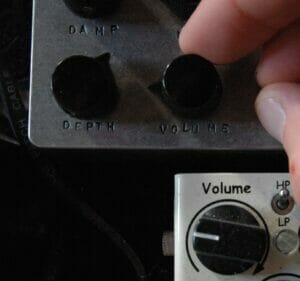Language: Español
Our reaction to what life brings before us cannot always be predicted but a dose of self-knowledge can help. In this article, I will go through aspects of the nervous system, and how we can support each other in creating safer environments in our groups for practicing co-regulation during meetings
Humans are social beings, and we are hardwired to connect. We intuitively scan our surroundings for cues of safety and danger. In order to survive, we observe, process and respond to what is going on in our environment. Being aware of what makes our own nervous system responses, as well as those of others, kick in, can help us build healthier communities.
Sofie Malm
Time travel and trauma experiences
Our history and previous experiences shape the way our nerves react to what is going on here and now. Past trauma especially, can very strongly influence our responses. These trauma responses are time-traveling experiences, situations when we don’t really respond to what is happening in the present moment but to something that happened in the past. Let me give you an example: In a group meeting, when I suggest that we move forward with turning the unused shed into a creative workshop space, the person opposite me rolls their eyes, starts talking faster and in a higher-pitched tone, while arguing against my suggestion. I notice my belly tightening, blood rushing to my face turning my cheeks red and my mouth getting dry. Suddenly, I am very tense and my voice is paralyzed. I say “whatever” and then stay silent for the rest of the conversation. For me, the situation is completely out of hand, their reaction is too much and my response is definitely not contributing to creating a connection.

When I explore my reaction in retrospect, I realize that what I really reacted to happened 20 years ago. I reacted to a situation that occurred while I was working as a waitress and my boss humiliated me in front of a room full of guests. In that scenario, way back then, my boss also rolled their eyes and talked fast with a raised pitch. The group meeting is a new situation, but resembling an old one. And so an old wound got reactivated.
I have noticed other people in my circles going through the same thing. A lot of times our responses spiral off and we are no longer able to talk calmly about the topic at hand. Our responses are standing in the way of meaningful participation and lead to disconnect in the group. We have gathered for a reason, to organize around things we all care deeply about, but from time to time it is impossible to develop love, trust and safety. Intellectually, I know I am safe with the people around me, but my body tells me otherwise.
I don’t want to let situations like the one with my old boss stand in the way of meaningful organizing and change-making. However, my body is always trying to shield me from harm, and prevent previous painful experiences from reoccurring. This is obviously a good thing to strive for, but unfortunately, these physical responses sometimes prevent me from responding to the present and being in connection with myself and others. The time-traveling experience can remove me from the present.
When environmental triggers move us away from the experience of safety and provoke responses that keep us from connection, we need tools to make our way back to our social engagement zone. For some of us, some of the time, it is possible to manage that individually. To self-regulate, with calm breathing or other grounding practices, and move past the trauma response and back into the here and now. This can be challenging though, and most of us sometimes need the support of our peers to do this. Co-regulation helps us to adjust our response to the present reality.
What is the autonomic nervous system?
The nervous system gathers complex information from our entire body and coordinates our activities. The autonomic nervous system is a part of our peripheral nervous system (basically all the nerves located outside of the brain). It is involuntary, it acts without us actively affecting it or even thinking about it. The autonomic nervous system controls our glands and internal organs, and it takes care of processes such as digestion, heart rate and breathing. The autonomic nervous system also supports us with scanning for, interpreting and responding to danger cues.
The autonomic nervous system has developed through three evolutionary stages. It developed from ancient fish to mammals and human mammals, and at each step, its complexity grew. This evolutionary process has created a hierarchy of pathways in the autonomic nervous system, each one associated with a particular kind of behavioral response.

The oldest pathway causes an immobilization response to perceived danger. This leads us to respond to our fear by becoming frozen, numb, or shutting down. The next pathway brings us into mobilization. We become activated and get an adrenaline rush that allows us to fight or run away. The third pathway responds with social engagement. It is the newest addition to the hierarchy of responses and allows us to feel safe, calm, connected, creative and engaged.
We usually react with our newest system, and if that doesn’t work, we try an older one, then the oldest. This is often referred to as climbing up and down the nervous response ladder.
How does the nervous system affect our relationships?
Humans are social beings, and we are hardwired to connect. We intuitively scan our surroundings for cues of safety and danger. To survive, we observe, process and respond to what is going on in our environment. These actions are part of the autonomic nervous system so they happen without us being aware of them, or able to control them. This involuntary and automatic scanning of our environment, and our responses to the cues we receive, plays a central part in creating our experience of the world.
This scanning of our environment can provoke different responses in us, where different parts of our nervous system become engaged. Some parts of us are searching for, and responding to, cues of safety, and will strive towards connection with others. Other parts of us are more attuned to signs of danger, and will move us towards self-protection, and away from a connection. When the latter parts completely take over we can experience a sensation of being frozen or shut down.
The nervous system is responding to everything we experience
Every day we will move up and down the ladder of feeling safe or in danger based on the situations we face. Being with people we know and trust will usually keep us in the social engagement response zone. While other things, such as a barking dog, someone’s tone of voice, a slight change of facial expression, a certain type of body posture, a sudden sound or a memory, might move us down the ladder
Being aware of what makes our own nervous system responses, as well as those of others, kick in, can help us build healthier communities. Recognizing when your nervous system might be misreading cues, sensing danger where there is none can support you in staying calm and connected. Similarly, understanding how your behavior might kick off somebody else’s nervous system can help you make different choices to support the regulation of others.
If we find ourselves feeling unsafe, most of us can fairly easily move back up into social engagement when we realize that we were not facing a real threat. But many of us have experienced situations that have led to trauma, which skews our ability to properly assess cues of danger. Trauma is the result of a situation being too much, too soon, and too fast and leaving the body helpless and unable to respond properly. The goal of a body that has experienced that is to not have to experience such a situation again. And therefore it does everything it can to protect itself, usually by avoiding everything that seems similar to the situation causing the trauma. The response can therefore be out of proportion. Similarly to when I was reacting to what my old boss did to me, twenty years later, the trauma reaction comes up again and again, in seemingly banal situations.
What nervous system activation might look like

While we are working hard to protect ourselves from past or perceived present danger, we can misinterpret cues as dangerous (even though they are neutral, or even safe), causing us to move quickly down the ladder. Those cues, first of all, cause the body to respond and move into the next neural pathway: mobilization. Its characteristic fight/flight response can play out in many different ways. We aim to neutralize the threat or get away from the threat. This can be done by arguing, ignoring others, changing topics, appeasing someone, or pretending that there is no problem. You can notice people around you moving into an activated state as they start breathing faster and speaking both louder and faster. Their eyes might grow wider and they may start sweating. They might change their facial expression, and express fear and anger. They might also have a harder time understanding complexity, they might hear that something was said but don’t grasp the actual meaning in context. An activated person could respond by blaming, attacking, or judging others, and they could also get offended by something that they would otherwise shrug off.
When mobilization doesn’t work, we move even further down, towards immobilization. The increased feelings of danger and distress might cause us to freeze, feel numb, dissociate or completely shut down. You can notice people around you moving into immobilization as their breathing becomes shallower, their posture stiffens and they avoid eye contact. Their gaze might be unfocused and distant and they might show a blank facial expression. They might stop talking and retreat.

It is often easier to move back up the ladder with the help of others as our responses to danger cues are too overwhelming for us and we can feel trapped or unable to find a viable way to get out of the situation. As a facilitator, one of the most important things to create is spaces for social engagement and also to recognize when a person is reacting to danger cues and offer support with co-regulation.
We are wired for connection and we can practice co-regulation
When a situation spirals away from connection, we are all co-responsible to engage in co-regulating behaviors. We have about half-second to choose our reaction before the autonomic response kicks in. We will of course not have the capacity to make well-thought-through strategies in half a second. However, we can make it a habit to calm the body down by taking a deep breath in and then exhaling slowly. That single breath can be enough to keep us feeling safe and connected. We will not always have the capacity to offer co-regulation, but the more we practice, the more of that capacity we will build.
We can learn to remain aware of our bodily responses and improve our capacity to stay calm, rather than move down the ladder. From that calm state, we have access to our creative brain and our capacity to support our peers in co-regulating. When we understand that the behavior of others is not necessarily directed to us, but might just be their bodily responses, it gets easier to put ourselves aside and focus on restoring safety within the group. To help people feel calmer, we talk to them softly, modulate our voices and tones to support listening behaviors, and ensure that we create calm and quiet environments where we have time and space to hear each other.

Knowing that we have access to restoring practices within sociocracy such as a closing round, where we will be able to have our feelings and needs met will make it easier to hold sadness or disappointment throughout the meeting.
The more we practice co-regulation, the more our capacity to self-regulate grows, and there will be more and more people in our groups that can halt a downward spiral.
As a facilitator in a group, we have the opportunity to support people in their co-regulation. Modeling a co-regulating behavior makes it easy for participants to pick up habits that support a healthy harmony in the group. Striving towards healthy group harmony does not equate to conflict avoidance, but rather taking on conflict and disagreement from regulated states and moving forward with the collective goal in mind.
What tools can I use as a facilitator?
- Validation – Use affirming language. Example: ”I hear that you are upset and that it is important for you that we attend to conflicts within our group. Is there anything else that you want to be heard?”
- Help participants recognizing messages from the body – Invite the participants to explore what is going on in their bodies. Play with embodying various feelings, such as anger, fear or joy. Ask: ”What happens in your body when you take the shape of anger?” “What happens in your body when you see someone taking the shape of fear?”
- Explore sensations, such as movement, temperature, or pressure in different places of the body when you play with these emotions. Ask: “What happens when you explore that sensation?”
- Centering with intention – Open the circle by inviting the participants to center around your collective purpose. Ask the participants to stand up and put one hand on the belly and the other on the chest and feel their breathing. Read something that gives meaning to the group such as the vision statement or a poem.

- Orient towards beauty – We can only experience beauty when we feel safe. Decorate the meeting space with beautiful items. Make sure all participants are aware of the items that bring them joy before starting the meeting. When there is a need for regulation, ask the participants to orient towards their item and describe it.
- Break the pattern and connect to the body – When things get heated and we are caught up in our traumatic response, we tend to lose contact with our body. Continuing a discussion when people are in trauma response is probably not the best call. Take a break, reconnect to your bodies through games, self-touch, taking a walk or a centering practice. Return afterward and address the tension.
See more about what to do when emotions get high here
How can I regulate my nervous system as a circle member?
- Offer support to your contraction or tension – You might notice that you are clenching your fist. What happens when you support your fist by holding it tight?

- Turning the volume up or down – Imagine that the sensations in your body had a knob for turning up or down their volume. What happens when you turn the volume of that tightness in your throat down, just a little bit? What happens when you turn the volume of your pounding heart up a little bit?
- Love the resistance – When resistance comes up it is a sign that something is important to you. Sit with the resistance and explore it. Tend to those initial concepts and ideas of what you don’t want, what are they telling you about what really matters? What are they pointing towards? Start exploring what you would want and which values your hold dear.
- Take a deep breath and bring to mind a memory of connecting with the person you are experiencing difficulties with. Explore the sensations that show up in your body with this memory.
How can I support others with co-regulation as a circle member?
- Calm down your voice – speak more slowly and use more melody
- Validation – I hear that your interpretation of what I said was that I didn’t want to move forward with the proposal. I need to get my needs across, so give me another chance to explain the alterations that I suggest to move forward
- Smile and tilt your head – this creates a perception that you are safe, and not a threat
- Stay calm and connected – use the tips to regulate your own nervous system to avoid following the downward spiral
Conclusion
Our reactions are not always solely related to what is going on in the room at the moment. The skill of knowing yourself well enough to determine where you are on the ladder and whether you are about to start climbing down and the ability to tune in to others is crucial to building healthy relationships. I hope these tools can help you and your group to start practicing co-regulating techniques together.

